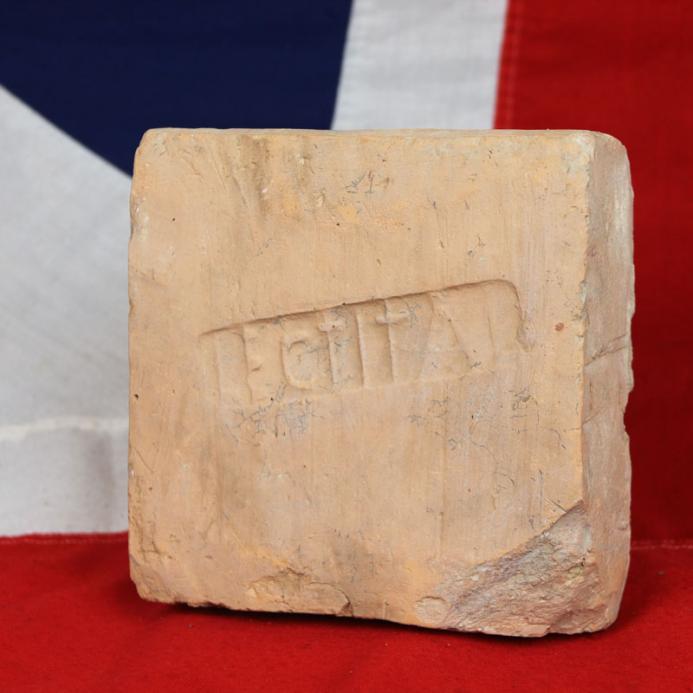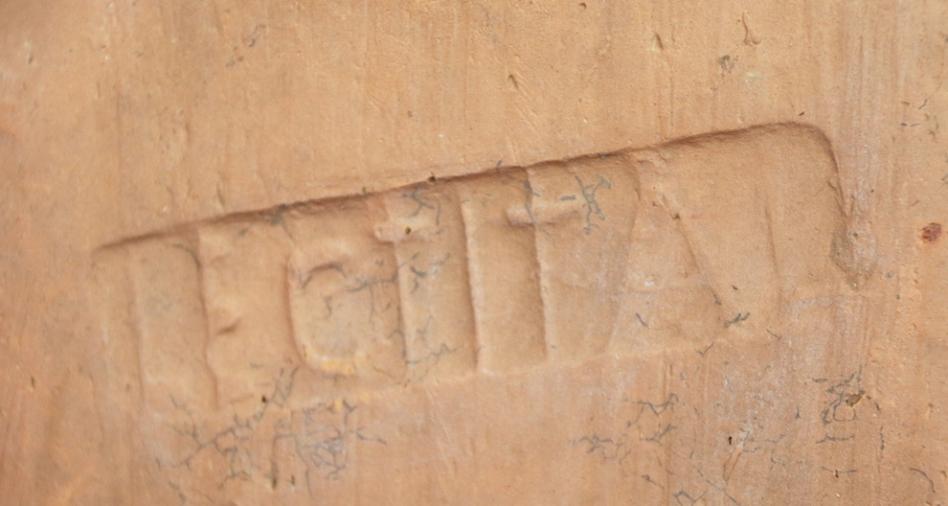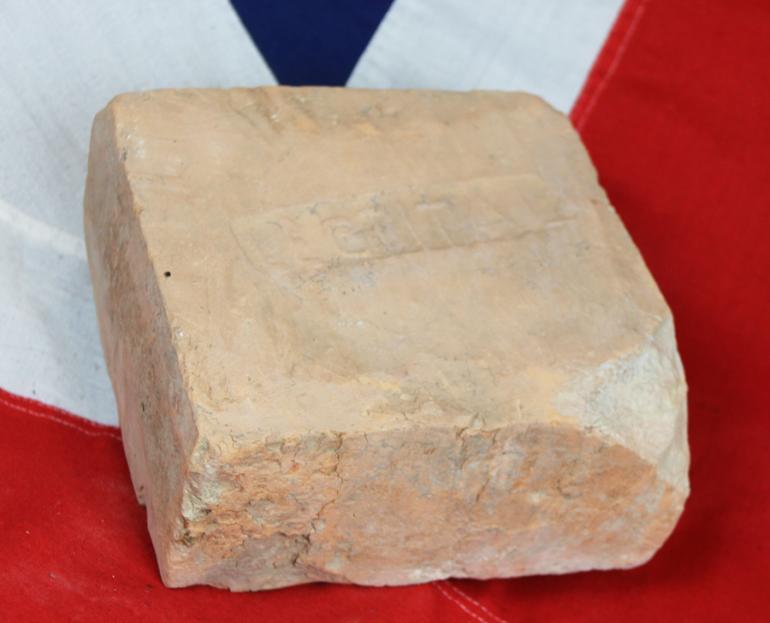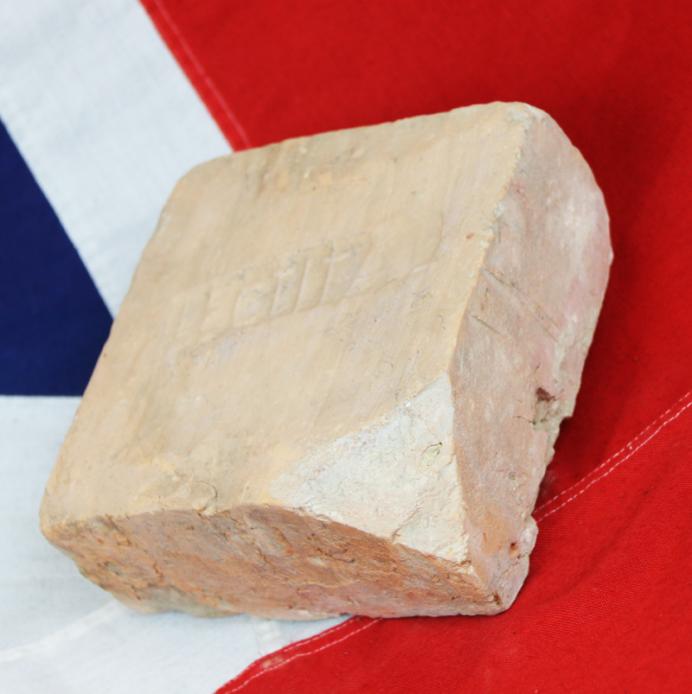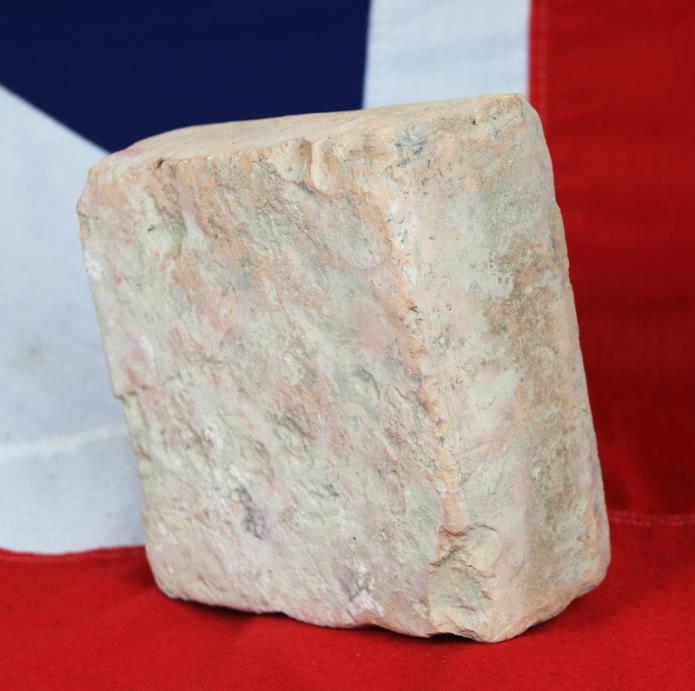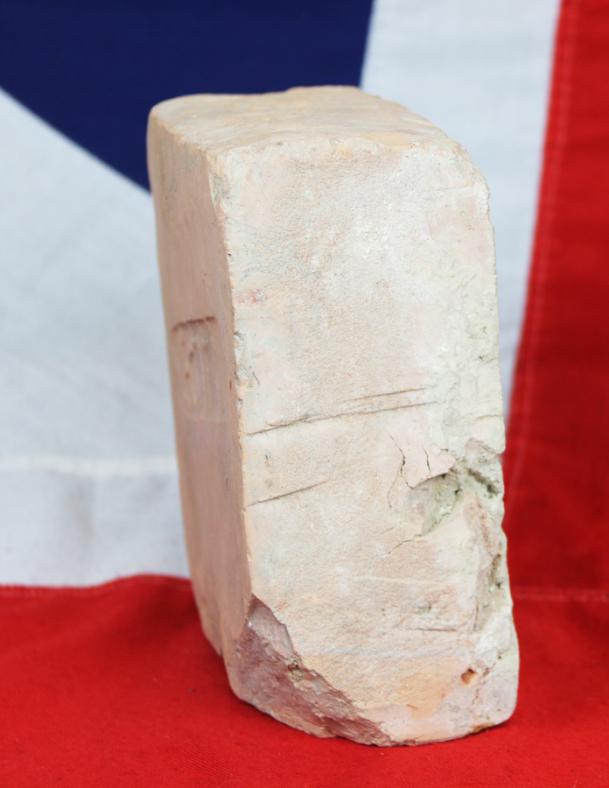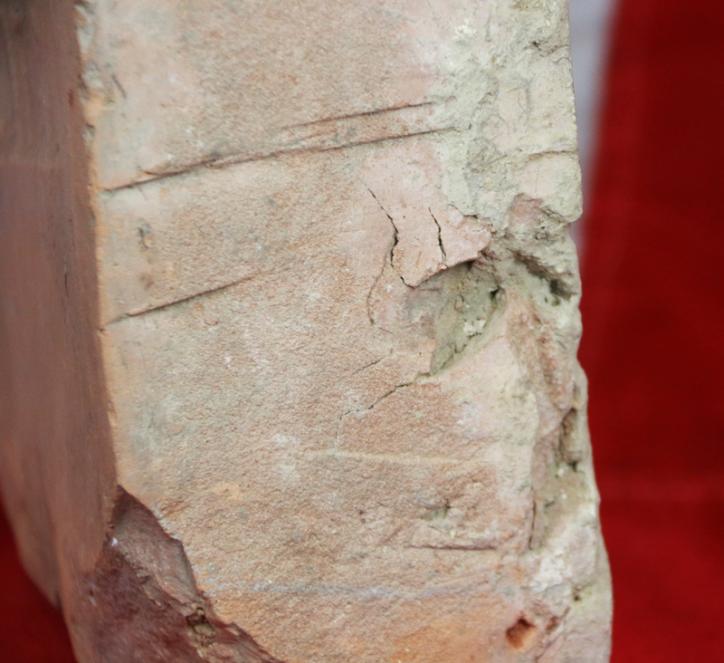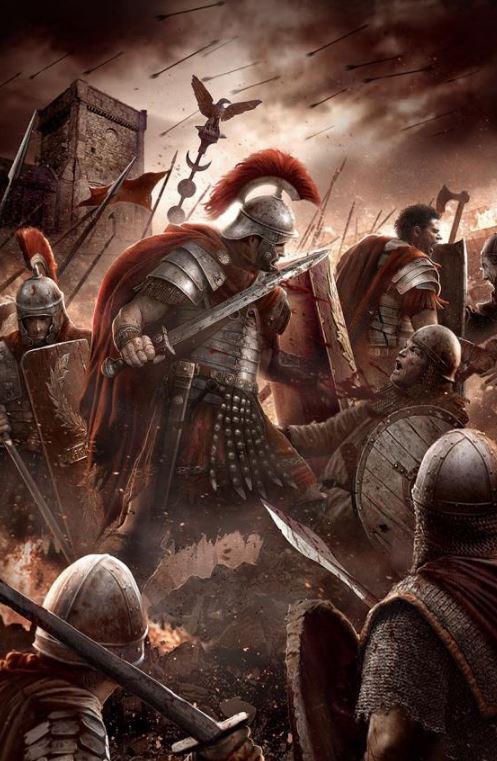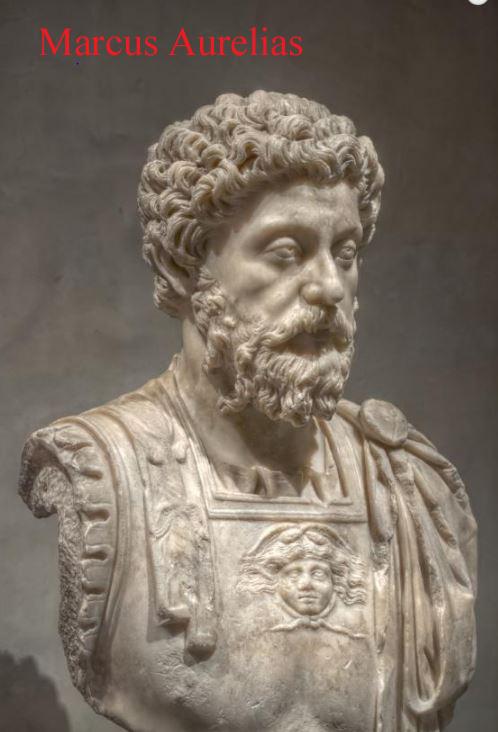A Very Rare Antiquity of Ancient Roman Empire. The 1st Roman Legion, Late 1st century AD, Rectangular Building Block With Stamped Text 'LEG I ITAL' for 1st Legion 'Italica';
A notable and substantial piece formerly from the renown Scammell Collection of ancient artifacts. Its original mortar is still attached to the reverse. LEG I ITAL was the first legion raised by Emperor Nero in September 66 AD. In 181 AD, Marcus Valerius Maximianus, an important Roman general, was the general of the 1st Legion Italica, and he was a confident of Emperor Marcus Aurelias, during the period of the Marcomannic Wars. It is said he inspired the composite fictional general Maximus Decimus Meridius, the main character and Roman General in Gladiator played by Russell Crowe, and it was the Marcomannic wars that are depicted in the earliest scenes in Gladiator in which the fictional Marcus Valerius Maximis was a commanding general. Marcus Valerius Maximianus was placed in charge of detachments of the praetorian fleets of Misenum and Ravenna and also of African and Moorish cavalry used for scouting duties in Pannonia. While on active service with the cavalry Maximianus killed a Germanic chieftain named as "Valao, chief of the Naristi" with his own hand and was publicly praised by the Emperor, who granted him the chieftain's "horse, decorations and weapons". He was appointed prefect of the lance-bearing cavalry and was in charge of the cavalry. The Ist Legion was still based on the Danube in the 5th century. We show a Roman marble bust of Emperor Marcus Aurelius who was played by Richard Harris in Gladiator. The main fighting unit of the Roman army was the legion. During the first three centuries of the empire the army contained between 25 and 34 legions. Each legion was made up of about 5000 men recruited from the citizens. Although the soldiers of the legion were Roman citizens, they were drawn from all walks of life and legions often consisted of natives from conquered countries.
The legion contained within its ranks troops trained and equipped to perform many duties in wartime and peace. Although the vast majority of soldiers served as heavy infantry, other legionaries fought as cavalry, archers or light infantry. Other troops operated artillery such as the ballista, onagar and scorpio The troops were however not solely prepared for combat. Legionaries regularly served as engineers constructing fortifications, roads and bridges. As the legion counted among its complement a vast number of men with special skills, it was in many ways self-supporting. A large part of its military equipment could be produced by craftsmen drawn from the ranks. Soldiers trained as surveyors, engineers and architects ensured that the legion needed little outside help for its building requirements. As far as a Legion travelled it built buildings, bridges, even sewer systems. And their efforts were stamped upon some of their building bricks to show which legion had constructed them. There are some parts of London that still bear bricks stamped by their engineers of the Roman Legions. Bricks, blocks and tiles stamped P.P.BR.LON or some variant of this has been found associated with the traces of the old Roman palace off Cannon St. Whatever the meaning of the first P, it is clear that the P.BR.LON or PR.BR., as it sometimes appears, is an abbreviation for PROVINCIAE BRITANNIAE LONDINII. At the site of a Roman bath house in Jerusalem, three of the bricks recovered bore the same style of rectangular stamped impression of the Roman Legio X Fretensis – stamped thus LE X FR. Legio X Fretensis ("Tenth legion of the Strait") was a legion of the Imperial Roman army. It was founded by the young Gaius Octavius (later to become Augustus Caesar) in 41/40 BC to fight during the period of civil war that started the dissolution of the Roman Republic. X Fretensis is then recorded to have existed at least until the 410s. This Roman block is from the private collection of Antony John Scammell (1937-2019); acquired on the UK art market from 1960. Antony John Scammell (1937-2019) was born, and lived his entire life, in the city of Bristol, England. Already from an early age he was enthralled by history and the heroes that it created. While serving overseas with the British Army, Antony began collecting coins and banknotes and this led to collecting a variety of different items throughout his life. From the early 1960s onward, Antony invested in acquiring ancient artefacts. Antony's vast collections started with Egyptian antiquities, but soon branched into Greek and Roman civilisations. The Roman civilisation fascinated him most and, when family commitments allowed, archaeological digs were coordinated in the west of England. These digs uncovered numerous artefacts, many of which were donated to local museums. In retirement, the collecting continued apace, branching into UK coins, British Empire banknotes and fossils. It weighs 4.6 kg, and is 19 x 19cm (7 1/2 x 7 1/2").
Code: 23424
1450.00 GBP

